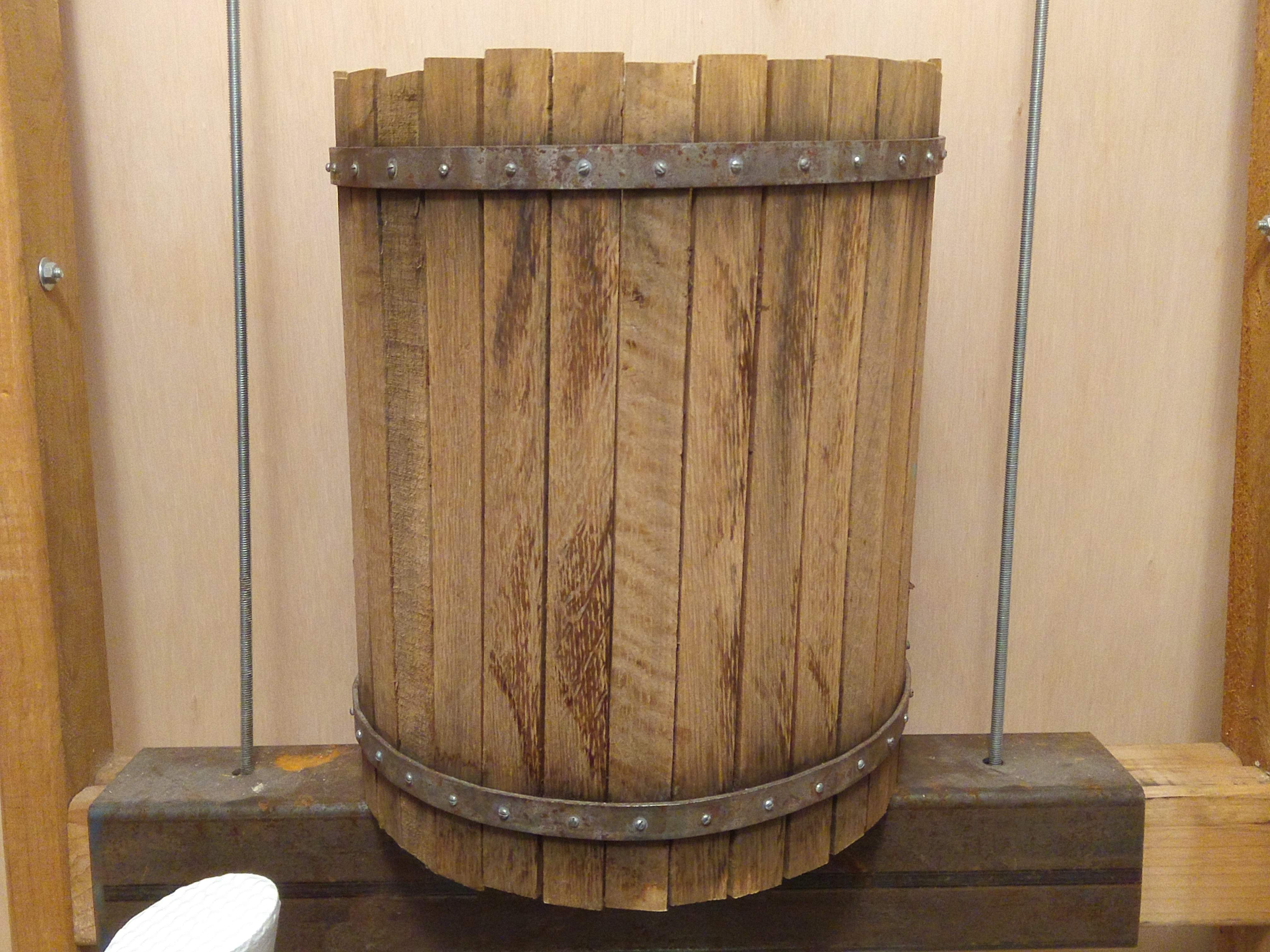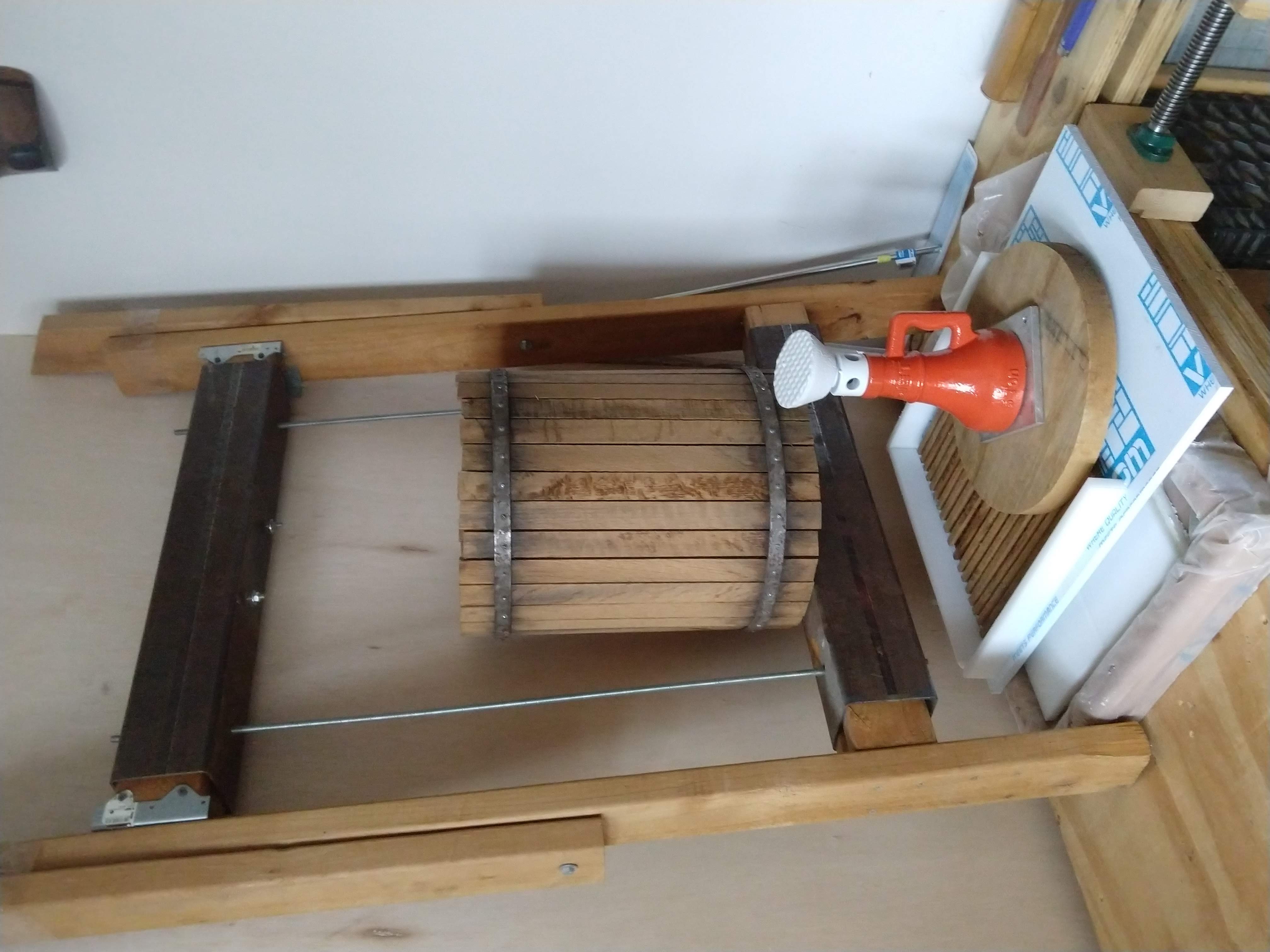
Once upon a time, my friends and I went apple-picking, and decided we wanted to make some hard cider. So we got in touch with a friend of a friend who had a working cider press, drove out to the coast, and pressed some apples. This was great fun, but the next year we wanted to use our own cider press, instead of taking a road trip to someone else's. My partner Daniel and I had a few design constraints: that the footprint fit in our apartment kitchen, and that the press should disassemble for easy storage.
So we came up with a design that used a hydraulic bottle jack, pressing an inch thick follower into a pressing barrel (with gaps between the slats) full of shredded apples. The apple juice flowed out and down and onto a tray lined with food-grade PET, into a bucket. We constructed the barrel, catch-tray, a wooden mesh to keep the apples from damming the flow, and a frame to hold the whole assembly.

Building the system to properly direct and withstand the force of the jack was the hardest part of this project. We knew that we could cause serious damage if a component failed under load. The jack bears onto a metal box-beam, attached with threaded rods to another box-beam under the catch tray. The wooden frame runs through the box-beams, so it hold the weight of the assembly, but the threaded rod bears the force of the compressed apples, and is rated accordingly. We also calculated the forces on the barrel slats, so we could cut them to an adequate thickness and fasten the hoops with strong enough bolts. We used white oak for the barrel, follower, and mesh; its closed-cell structure makes it naturally resistant to absorbing liquid.
We've used our press to make several batches of hard cider and hosted multiple community apple-pressing events, where everyone brings some apples and goes home with some cider. Currently the press is in need of some repairs, including a new catch-tray that will be easier to sterilize. I look forward to bringing the fun of home engineering to more audiences next year!